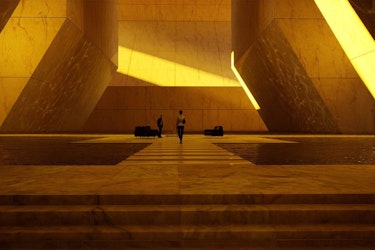In movies, architecture is frequently dismissed as scenery, yet the camera emphasises how important it is in real life. Writing and filmmaking have long been fascinated by architecture, and some of the most famous movies in history are remembered for their settings. An important portion of a movie's plot is set by the architecture, which also contributes significantly to the screenplay, as was the case with the recently renowned South Korean film Parasite.
Successful architectural visualization artists often stress the importance of looking at films, photography, film and, most importantly, nature for inspiration. Photography is regarded as not only essential for creating accurate materials and lighting, but also as an indispensable tool for better understanding composition, framing and atmosphere. This, next to exploring physical qualities of the real word, is seen as the crux of photorealism. These movie genres rely more and more on technological advances in computer graphics. What used to be accomplished with three-dimensional small-scale models is now achieved with digital architectural models, special effects, and render farms, shifting a considerable amount of work and budget from pre- to post-production.
The artists who develop a distinctive style go beyond photorealism. They produce appealing pictures that don't appear blatantly presentational but instead give locations an emotional meaning beyond mere desirability.
Here are 11 movies with outstanding architecture, ranging from science fiction to documentaries, that you ought to put on your "must watch" list right away.
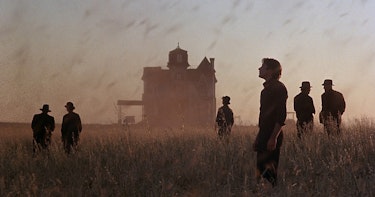
Credit: Architizer
1. Metropolis (1927), directed by Fritz Lang
The science fiction cinema industry may have been influenced by Metropolis, which also started the conversation about the relationship between film and architecture. The idealistic tone of the movie is a result of the period in which it was produced, when people were upbeat about the future and the advancements in science it would bring. The German Expressionist aesthetic of the set design, which influenced architects at the time and still has an influence today, enhances this.
With regard to science fiction design in particular, Metropolis marked the beginning of a revolution in cinema.

Credit: IMDb
2. James Bond (1962 – present)
Architecture isn’t just important in science fiction films, as the James Bond series show. While some of the action is clearly out of the realms of the ordinary, the futuristic designs have their place in reality. As well as stunning classical architecture, throughout the films we can see the evolution of Postmodern architecture as the backdrop to Bond’s near brushes with death, and inevitable success. Perhaps one of the most famous sites in the films is the SIS Building in London, which is immediately recognizable and stands out even alongside its contemporaries.
Ironically Ian Fleming, the creator of the series, disliked modern architecture and even named the villain Goldfinger after the English Brustalist architect Erno Goldfinger.
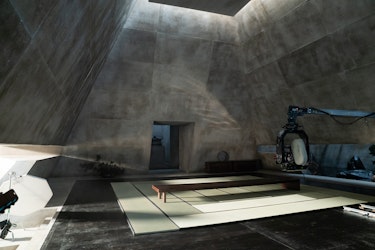
Credit: Architectural Digest India
3. Star wars series (1977 – present), directed by George Lucas
As the James Bond series demonstrates, architecture is significant outside of science fiction movies. The futuristic aesthetics have a place in reality, even though some of the action is obviously out of the norm. Along with the gorgeous classical architecture, we can witness the development of postmodern architecture as the setting for Bond's achievements and near-death experiences throughout the movies. The SIS Building in London, which is easily recognised and stands out even among its contemporaries, is possibly one of the most well-known locations in the movies.
Ironically, the series' author, Ian Fleming, despised contemporary architecture and even gave the villain, Goldfinger, his name in honour of Erno Goldfinger, an English Brustalist architect.
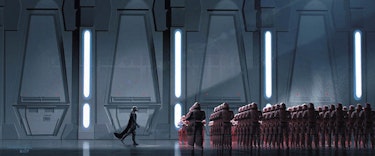
Credit: StarWars.com
4. Blade Runner (1982), directed by Ridley Scott
If Metropolis is regarded as the pioneer, then Blade Runner may be credited for popularising the notion of the connection between cinema and architecture. It undoubtedly cemented the idea that cities of the future will consist of infinite vertical towers constructed to accommodate population increase. The raw realism of the future and people's fear of what it may bring are reflected in the gloomy cinematography. The multi-level structure seems to offer another depth and provides an exciting setting for the portrayal of the characters.
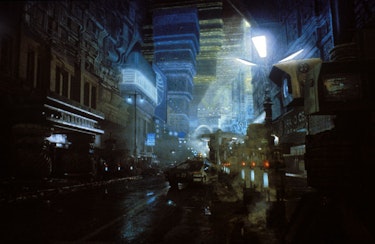
Credit: ArchDaily
5. Castle in the Sky (1986), directed by Hayao Miyazaki
When considering architectural films, animated movies may not come to mind right away, but they really include some of the best illustrations of intricate design. Any of the Studio Ghibli movies by Hayao Miyazaki, one of the most significant figures in animation, would be welcome on this list. More credit should be given to the backdrops of films like Howl's Moving Castle and Castle in the Sky, but the films' main focus is the architecture itself, which is addressed in a unique way by the filmmaker. Similar to science fiction, Miyazaki employs imagined architecture to create a world with fewer restrictions, but the animation gives the impression that everything is conceivable.

Credit: Polygon
6. Sketches of Frank Gehry (2005), directed by Sydney Pollack
It is crucial that we acknowledge the non-fiction movies about architecture as well, since they are able to speak to it directly in a manner that fiction cannot. One of the most significant and well-known architects in recent memory, Sydney Pollack, a renowned director, made a beautifully crafted homage to his longtime friend Frank Gehry. Gehry's distinctive approach to design, which began with the building's spirit rather than its fundamentals, set him apart from other architects. The Walt Disney Concert Hall and the Guggenheim Bilbao are two of the 20th century's most recognisable structures as a result of this. Sketches of Frank Gehry is a fascinating look at how one modest guy was able to design some of the most breathtaking structures in the world. It is driven by a series of close-knit yet casual conversations that explore the creative process.
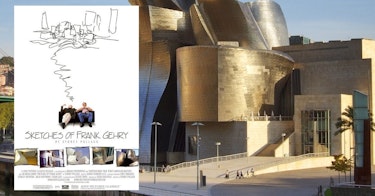
Credit: The Society of the Four Arts
7. Infinite Space: The Architecture of John Lautner (2008), directed by Murray Grigor
John Lautner is honoured in Infinite Space: The Architecture of John Lautner, whose flamboyantly modernist homes, particularly in Southern California, have made memorable film appearances. Ironically, the movie's own structure is weak and its second half need narrative reinforcement. Murray Grigor investigates Lautner's life and career using both interview and building inspection techniques. The movie contains some stunning vistas that make the most of natural light and showcase Lautner's art, bringing it together with the surrounding scenery. It does a better job of showing than telling.
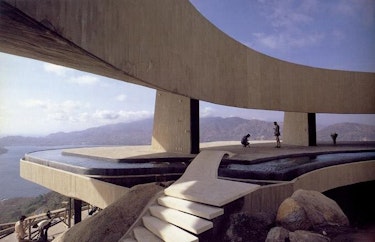
Credit: MUBI
8. Visual Acoustics (2008), directed by Eric Bricker
The exhibition Visual Acoustics honours Julius Shulman, the foremost architectural photographer in history, whose photographs popularised contemporary architecture in America. Since the 1930s, Shulman has taken photographs of practically every contemporary and forward-thinking architect, including Frank Lloyd Wright, John Lautner, and Frank Gehry. His photos changed the public's perception of architecture as something approachable by capturing the unique beauty of Southern California's Modernist movement and drawing attention to its prominent buildings. This exceptional movie serves as both a celebration of contemporary architecture's development and a joyous depiction of the charismatic, astute man who captured it in his indelible photographs.
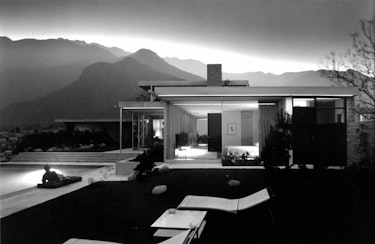
Credit: Slant Magazine
9. Citizen Architect: Samuel Mockbee and the Spirit of the Rural Studio (2010), directed by Sam Wainwright Douglas
Samuel Mockbee established a school to educate architecture in a way that had never been done before, while Julius Shulman photographed architecture to make it more approachable. The documentary addresses the notion of responsibility in architecture and how it relates to problems with poverty, class, racism, and citizenship. It follows the design and construction of a building from beginning to end. The school analyses how architecture may be used to improve the world and teaches students how to construct communities, not just buildings. If you're interested in the social effects of architecture, the movie provides a whole different viewpoint on the subject.
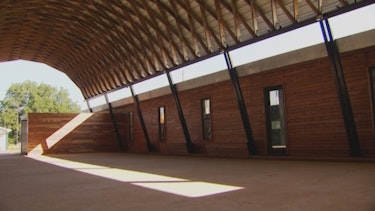
Credit: Graham Foundation
10. Ex Machina (2014), directed by Alex Garland
Ex Machina is among the most influential movies recently because of how deeply it explores the idea of artificial intelligence. The setting of the action just makes this better. The three personalities that interact there are highlighted by the home, a modernist masterpiece that is nestled away in solitude. The more time passes, the more the sharp distinction between man-made and natural, machine and human, becomes blurred, creating a striking contrast between the clean lines of the home and the craggy rock that forms a portion of it. In addition to being the setting for the action, the architecture also reflects it.
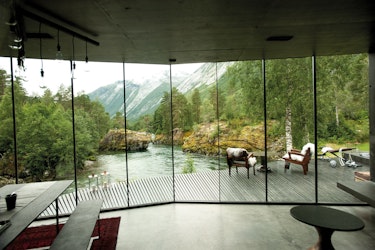
Credit: Film and Furniture
